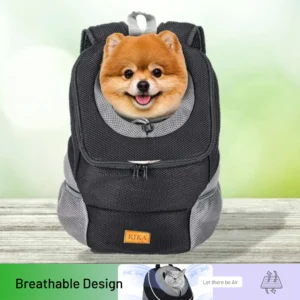Introduction
Ever thought of combining your passion for fitness and fashion into a thriving brand? Whether you’re tired of boring gym gear or inspired by a lifestyle of movement and motivation, building a fitness fashion brand from scratch can be a powerful journey. But it’s not just about cute leggings or motivational slogans—it’s about strategy, identity, and consistency. Let’s break it down step by step so you can flex your entrepreneurial muscles with confidence.
Understanding the Fitness Fashion Market
Trends in Fitness Apparel
Fitness fashion isn’t just about gym sessions anymore. Athleisure—a mix of athletic and leisurewear—is now a staple in modern wardrobes. From moisture-wicking fabrics to seamless leggings and eco-friendly options, the industry has evolved fast. Consumers are looking for function and style.
Who is Your Target Audience?
Are you designing for yogis, runners, weightlifters, or just everyday fitness lovers who want to look good while grabbing coffee? Narrowing down your audience helps guide everything—from designs to messaging.
Laying the Foundation
Defining Your Brand Identity
Think of your brand as a personality. Is it bold and edgy? Minimalist and eco-conscious? Luxurious or budget-friendly? Your values, tone of voice, and vibe should be consistent across all platforms.
Choosing a Niche
Don’t try to please everyone. Focus on a specific market: plus-size gym wear, minimalist athleisure, CrossFit apparel, sustainable yoga wear—whatever it is, own it. Niche = loyal following.
Business Planning Essentials
Creating a Business Plan
A solid business plan keeps you on track and helps attract investors. Include:
-
Executive summary
-
Market analysis
-
Marketing strategy
-
Product roadmap
-
Financial projections
Budgeting & Funding Options
Starting small or dreaming big? Either way, you need capital.
Self-Funding
Using your savings? Great—you keep 100% ownership, but be mindful of cash flow.
Investors or Crowdfunding
Platforms like Kickstarter or angel investors can provide funding while building hype. Just make sure you have a compelling pitch.
Product Development Process
Design Inspiration & Sketching
Start sketching ideas or hire a designer. Take inspiration from existing trends but add your unique twist. Comfort and performance should always lead the way.
Material Sourcing & Sustainability
Your fabric choices define quality and values. Sustainable materials (like organic cotton or recycled polyester) are gaining popularity and trust.
Finding the Right Manufacturer
This is where it’s vital to choose the right clothing vendor. Your vendor isn’t just a supplier—they’re a partner. The right vendor will deliver consistent quality, offer reasonable MOQs, communicate well, and align with your brand’s ethics. A bad choice here can ruin timelines, cost you money, and damage your brand’s reputation.
Branding & Positioning
Creating a Brand Name & Logo
Choose something memorable, relevant, and legally available (check domain and trademark availability). Your logo should reflect your identity and be versatile across platforms.
Developing a Unique Selling Proposition (USP)
What makes you different? It could be:
-
Innovative design
-
Body-inclusive sizing
-
Sustainable production
-
Performance tech fabrics
Make your USP the star of your messaging.
Building an Online Presence
Designing a Website with E-commerce
A sleek, mobile-optimized website is non-negotiable. Platforms like Shopify, WooCommerce, or Squarespace make it easier than ever.
Include:
-
High-quality product images
-
Descriptive and SEO-friendly copy
-
Secure checkout
-
Size guides and FAQs
Building a Social Media Strategy
Instagram, TikTok, and Pinterest are goldmines for fitness fashion. Use:
-
Influencer collabs
-
Reels & short videos
-
Behind-the-scenes content
-
Hashtags and giveaways
Marketing Your Brand
Influencer Collaborations
Partnering with fitness influencers is one of the fastest ways to build trust and visibility. Look for micro-influencers with high engagement in your niche.
Email Marketing & SEO
Email isn’t dead—it’s your direct line to loyal fans. Use welcome sequences, exclusive drops, and discount codes.
SEO boosts your Google visibility—start with optimized blog posts, product descriptions, and keyword-rich headlines.
Paid Ads & Promotions
Use Facebook Ads, Instagram Shopping, and Google Ads strategically. Start with low budgets and test different creatives before scaling.
Launching Your Fitness Fashion Brand
Soft Launch vs. Hard Launch
A soft launch (limited release) lets you test systems and gather feedback. A hard launch is more public and aggressive.
Launch Day Checklist
-
Inventory stocked?
-
Website tested?
-
Social media campaigns ready?
-
Email blast queued?
Nail the first impression—there’s no take-two on a first launch.
Scaling Your Brand
Inventory & Fulfillment Management
As you grow, managing stock becomes crucial. Consider tools like ShipStation or outsourcing to 3PL (third-party logistics) services.
Expanding Product Lines
Start small (e.g., leggings, sports bras), then expand into hoodies, shorts, bags, or accessories based on customer demand.
Exploring Retail Partnerships
Partnering with local gyms, pop-up shops, or boutique fitness studios can drive in-person exposure and sales.
Staying Competitive
Tracking Trends & Feedback
Follow fitness influencers, attend trade shows, and listen to your customers. Stay ahead by embracing change, not resisting it.
Innovating and Evolving Your Brand
You must stay innovative. For example, explore the benefits of using appropriate sports clothing for health—breathable fabrics that improve circulation, compression wear that reduces muscle fatigue, or UV-resistant materials for outdoor workouts. Health-conscious consumers notice these details, and they’ll choose your brand if you prioritize their well-being.
Conclusion
Building a fitness fashion brand from scratch isn’t just about stylish leggings and cute logos—it’s about purpose, planning, and persistence. From sketching your first design to launching your online store, each step requires hustle, heart, and a whole lot of strategy. But if you’re passionate and consistent, there’s no limit to how far you can stretch. Just remember to choose the right clothing vendor early and always prioritize the benefits of using appropriate sports clothing for health in your product development and marketing—these decisions make all the difference.
FAQs
1. How much money do I need to start a fitness fashion brand?
It varies, but a lean startup can begin with $5,000–$15,000. Costs include samples, production, branding, and marketing.
2. Do I need to be a fashion designer to start?
Not at all. You can hire freelance designers or work with manufacturers who offer design support.
3. What’s the best way to find manufacturers?
Use platforms like Alibaba, MakersValley, or local trade shows. Always request samples and vet them thoroughly to choose the right clothing vendor for your business.
4. Should I focus more on social media or SEO?
Both! Social media drives engagement and brand awareness, while SEO brings long-term, organic traffic.
5. How do I protect my brand legally?
Trademark your logo and brand name, and register your business officially. Consult a legal advisor for proper guidance.


